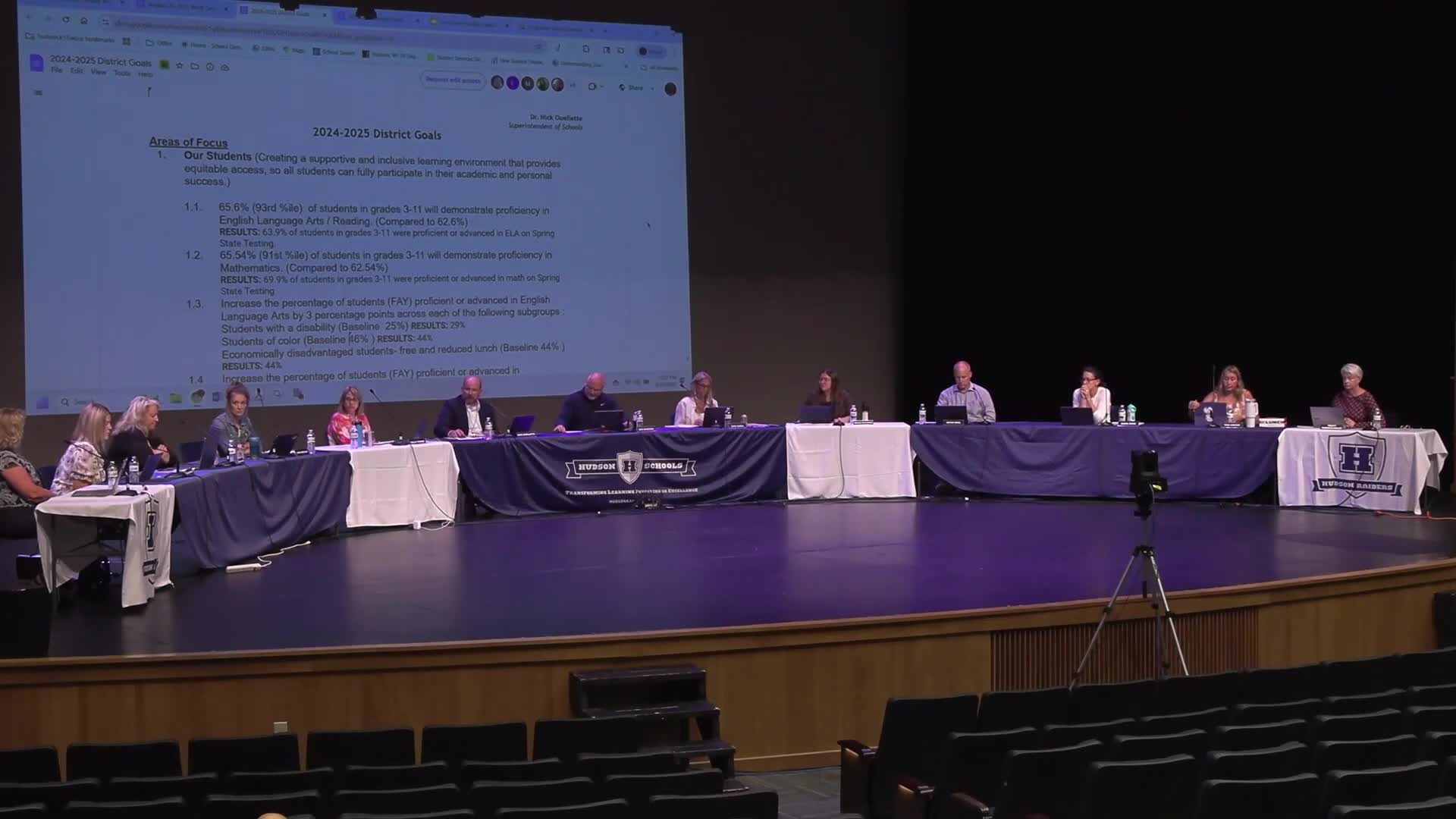School District Reports Mixed Proficiency Results in ELA and Math Assessments
August 26, 2025 | Hudson School District, School Districts, Wisconsin
This article was created by AI summarizing key points discussed. AI makes mistakes, so for full details and context, please refer to the video of the full meeting. Please report any errors so we can fix them. Report an error »

During the recent Board Work Session for Hudson Schools, held on August 25, 2025, significant discussions centered around student proficiency in English Language Arts (ELA) and math, revealing both achievements and areas for improvement.
The meeting highlighted that while the district aimed for 65.6% of students in grades 3 through 11 to demonstrate proficiency in ELA, the actual results fell just short at 63.9%. In contrast, math proficiency exceeded expectations, with 69.9% of students meeting the goal of 65.5%. Notably, some schools reported proficiency rates above 80%, showcasing strong performance in middle school math.
Board members expressed a desire for clarity on the rationale behind the proficiency goals, particularly the 65.6% target. It was explained that this figure represents a 3% increase from the previous year's baseline of 62.6%, a strategy aimed at gradual improvement. However, concerns were raised about the implications of setting such goals, especially in light of changing standards from the Department of Public Instruction (DPI).
Discussions also touched on the performance of specific student subgroups. For ELA, students with disabilities showed a slight increase from 25% to 29% proficiency, while students of color decreased slightly from 46% to 44%. In math, students with disabilities improved from 27% to 33%, and students of color saw a significant rise from 49% to 60%. Economically disadvantaged students maintained a steady proficiency rate in both subjects.
Board members emphasized the importance of understanding how these proficiency rates compare to other districts, noting that many high-performing schools in Wisconsin are achieving proficiency rates in the upper 70s. The district's long-term goals aim for 70% proficiency in ELA and 75% in math, which would position Hudson Schools in the 95th percentile among state districts.
The meeting concluded with a consensus on the need for ongoing efforts to improve student performance while recognizing that standardized tests provide only a snapshot of student learning. Board members agreed that a more comprehensive approach to assessing student progress is essential for accurately reflecting their capabilities and growth.
The meeting highlighted that while the district aimed for 65.6% of students in grades 3 through 11 to demonstrate proficiency in ELA, the actual results fell just short at 63.9%. In contrast, math proficiency exceeded expectations, with 69.9% of students meeting the goal of 65.5%. Notably, some schools reported proficiency rates above 80%, showcasing strong performance in middle school math.
Board members expressed a desire for clarity on the rationale behind the proficiency goals, particularly the 65.6% target. It was explained that this figure represents a 3% increase from the previous year's baseline of 62.6%, a strategy aimed at gradual improvement. However, concerns were raised about the implications of setting such goals, especially in light of changing standards from the Department of Public Instruction (DPI).
Discussions also touched on the performance of specific student subgroups. For ELA, students with disabilities showed a slight increase from 25% to 29% proficiency, while students of color decreased slightly from 46% to 44%. In math, students with disabilities improved from 27% to 33%, and students of color saw a significant rise from 49% to 60%. Economically disadvantaged students maintained a steady proficiency rate in both subjects.
Board members emphasized the importance of understanding how these proficiency rates compare to other districts, noting that many high-performing schools in Wisconsin are achieving proficiency rates in the upper 70s. The district's long-term goals aim for 70% proficiency in ELA and 75% in math, which would position Hudson Schools in the 95th percentile among state districts.
The meeting concluded with a consensus on the need for ongoing efforts to improve student performance while recognizing that standardized tests provide only a snapshot of student learning. Board members agreed that a more comprehensive approach to assessing student progress is essential for accurately reflecting their capabilities and growth.
View full meeting
This article is based on a recent meeting—watch the full video and explore the complete transcript for deeper insights into the discussion.
View full meeting
